1. Overview
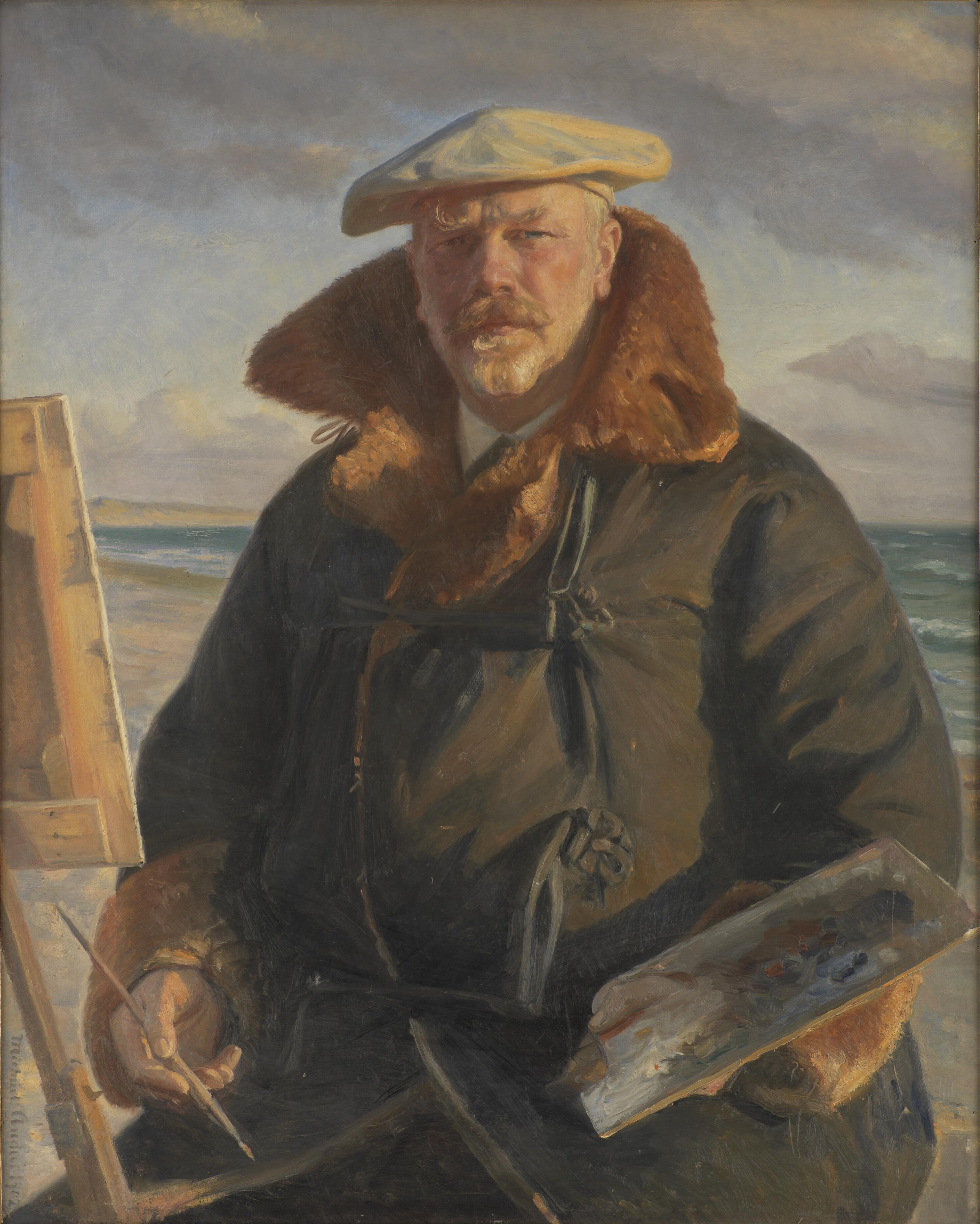
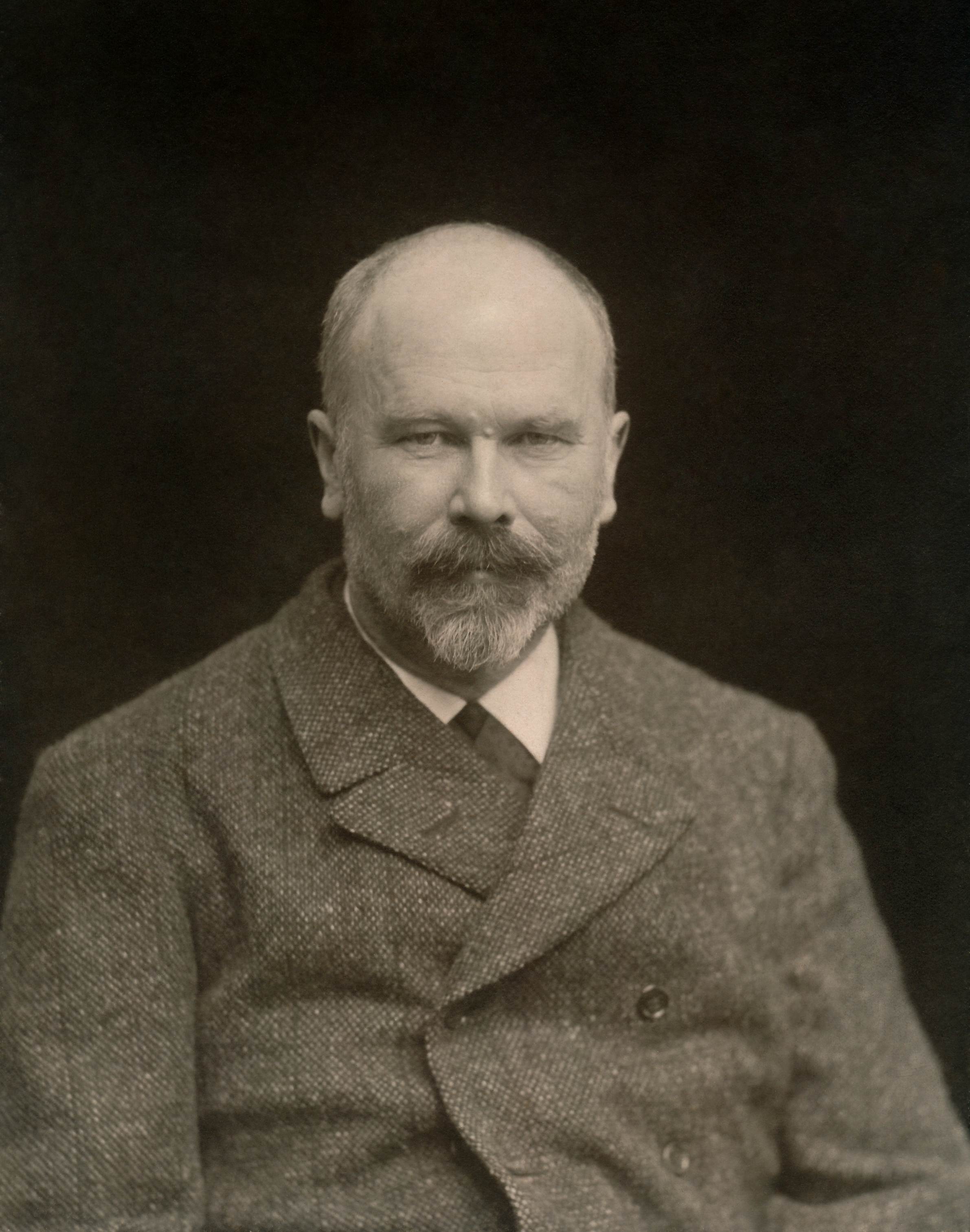
Michael Peter Ancher (Michael Peter AncherMEE-kayl PAY-ter ANG-kerDanish, June 9, 1849 - September 19, 1927) was a prominent Danish realist painter, widely recognized for his vivid depictions of the lives of fishermen and scenes from the Skagen fishing community in Denmark. His artistic journey began with traditional training, which he later fused with the naturalistic approach championed by his wife, Anna Ancher, creating a unique blend of classical composition and raw reality. Ancher's works often portray the heroic struggles and daily routines of ordinary people, particularly the fishermen facing the harsh conditions of the Skagerak and North Sea, reflecting a deep empathy for the working class and the local community. A key figure among the Skagen Painters, his contributions significantly shaped Danish art history, and his enduring legacy is honored through his preserved home, now a museum, and his image on Danish banknotes.
2. Life
Michael Ancher's life was deeply intertwined with his art, marked by an early struggle for education, a profound artistic calling, and a lifelong dedication to capturing the essence of life in the remote fishing village of Skagen.
2.1. Early Life and Education
Michael Peter Ancher was born on June 9, 1849, in Rutsker on the island of Bornholm in the Baltic Sea. The son of a local merchant, he attended school in Rønne. However, due to his father's financial difficulties, he was forced to abandon his secondary education and began to support himself from the age of sixteen. In 1865, he found work as an apprentice clerk at Kalø Manor near Rønde in eastern Jutland. The following year, in 1866, he encountered the painters Theodor Philipsen and Vilhelm Groth, who had come to the area to paint. Impressed by Ancher's early artistic attempts, they encouraged him to pursue painting professionally. Inspired by their encouragement, he enrolled in C.V Nielsen's art school for a brief period in 1871, as preparation for joining the Royal Danish Academy of Art in Copenhagen later that year. Despite spending some time at the academy, he ultimately left in 1875 without completing his degree.
2.2. Settling in Skagen and Marriage
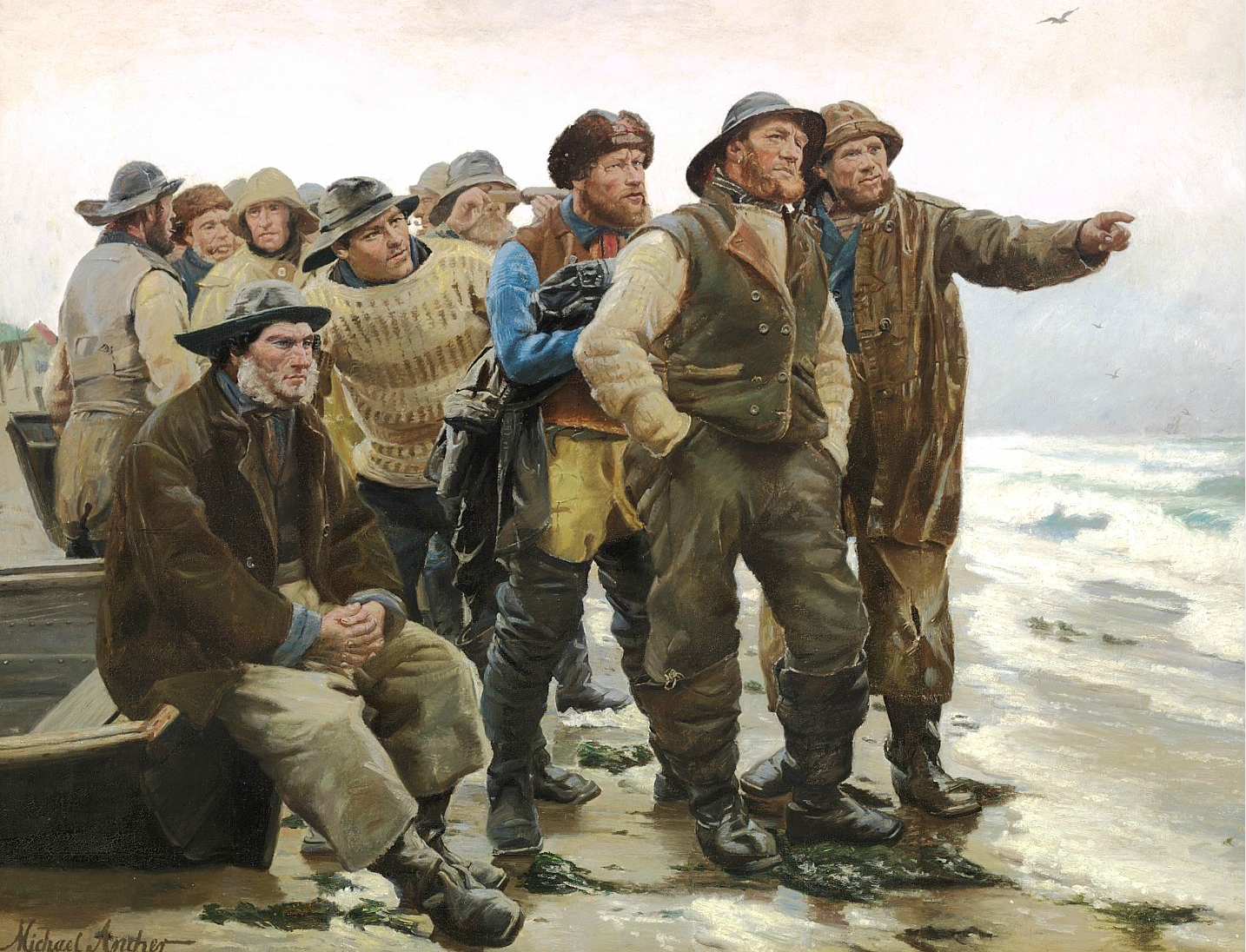
q=Skagen, Denmark|position=right
One of Ancher's student companions, Karl Madsen, invited him to visit Skagen, a small fishing village situated at the northernmost tip of Jutland, where the Skagerak and North Sea converge. Ancher first visited Skagen in 1874 and was immediately drawn to the burgeoning artist community there. He soon settled in Skagen, becoming a pivotal member of the group of artists who gathered in the village each summer, known as the Skagen Painters. This colony of painters frequently convened at the Brøndums Hotel in Skagen to exchange ideas and discuss their artistic endeavors.
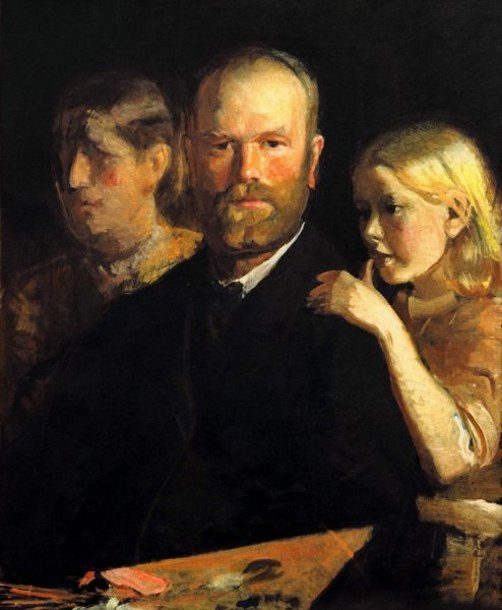
In 1880, Ancher married fellow painter Anna Ancher, born Anna Brøndum, whose father owned the very Brøndums Hotel that served as a central meeting point for the artists. In the initial years of their marriage, the couple established their home and studio in the "Garden House," a property that is now part of the Skagens Museum garden. Following the birth of their daughter, Helga Ancher, in 1883, the family relocated to a larger residence on Markvej in Skagen.
3. Artistic Career and Major Works
Michael Ancher's artistic career was defined by his commitment to depicting the authentic lives of the Skagen fishing community, merging various artistic traditions into a distinctive style.
3.1. Early Career and Development of Style
Ancher achieved his artistic breakthrough in 1879 with the painting Vil han klare pynten (Will he round the point?). His early artistic development was significantly shaped by his traditional training at the Royal Danish Academy of Fine Arts in the 1870s, which emphasized strict rules for composition. However, his marriage to Anna Ancher brought him into contact with naturalistic principles, particularly the concept of reproducing reality and its colors without embellishment. By skillfully integrating the classical pictorial composition techniques he learned in his youth with the fresh teachings of naturalism, Michael Ancher forged a unique artistic approach. This synthesis allowed him to create what has been described as modern monumental figurative art, evident in works such as A Baptism. Despite the influence of Impressionism on many painters gathering in Skagen during the 1880s, Ancher's personal style remained more classical in its foundation.
3.2. Notable Works and Characteristics
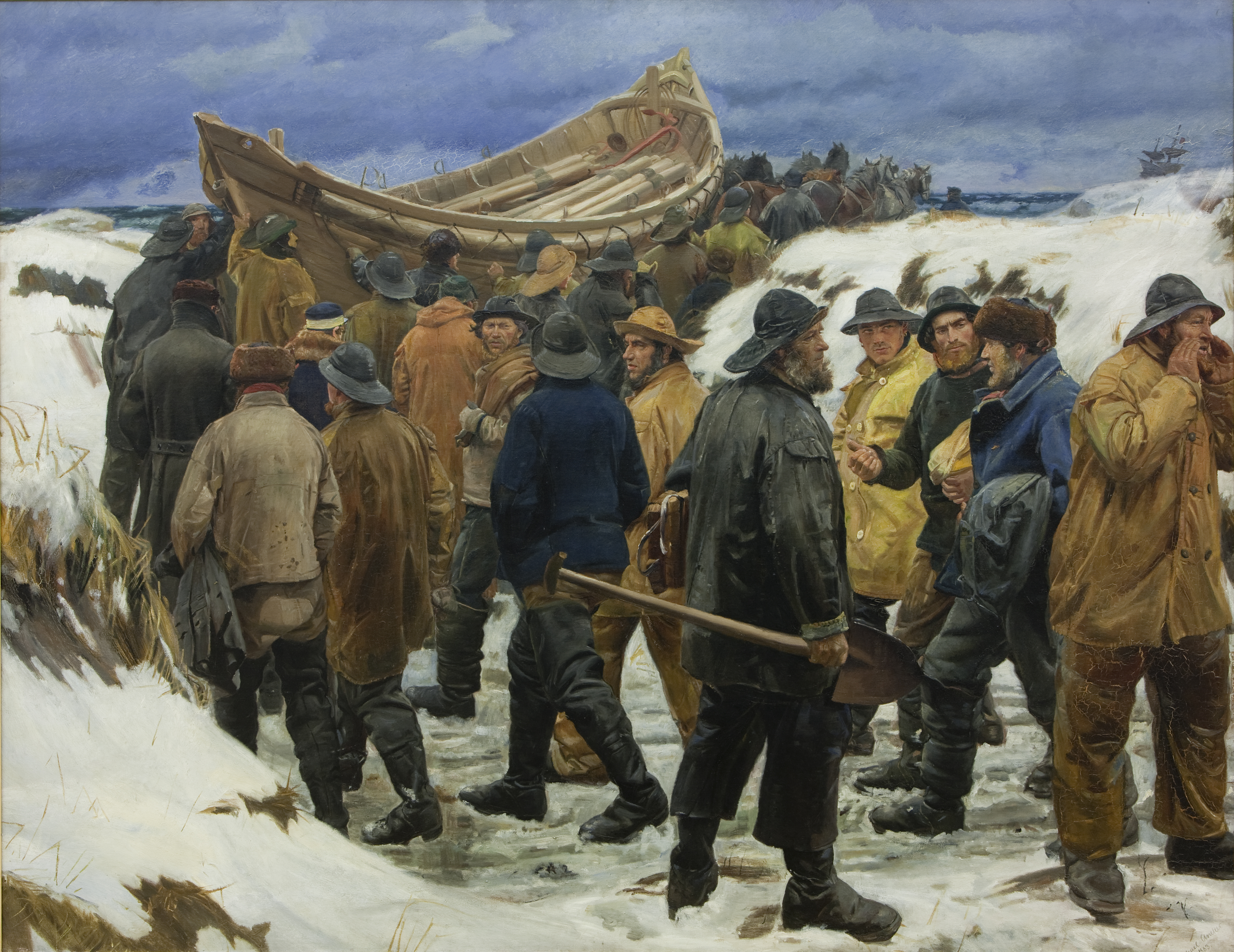
Michael Ancher's representative works consistently portray the heroic fishermen of Skagen and their dramatic experiences at sea, combining a rigorous realism with classical compositional structures. His art frequently explores themes centered on the daily lives and struggles of the local population, especially the fishing community, highlighting their resilience and their often perilous relationship with the sea. This focus reflects his deep empathy for common people and the social realities of Skagen.
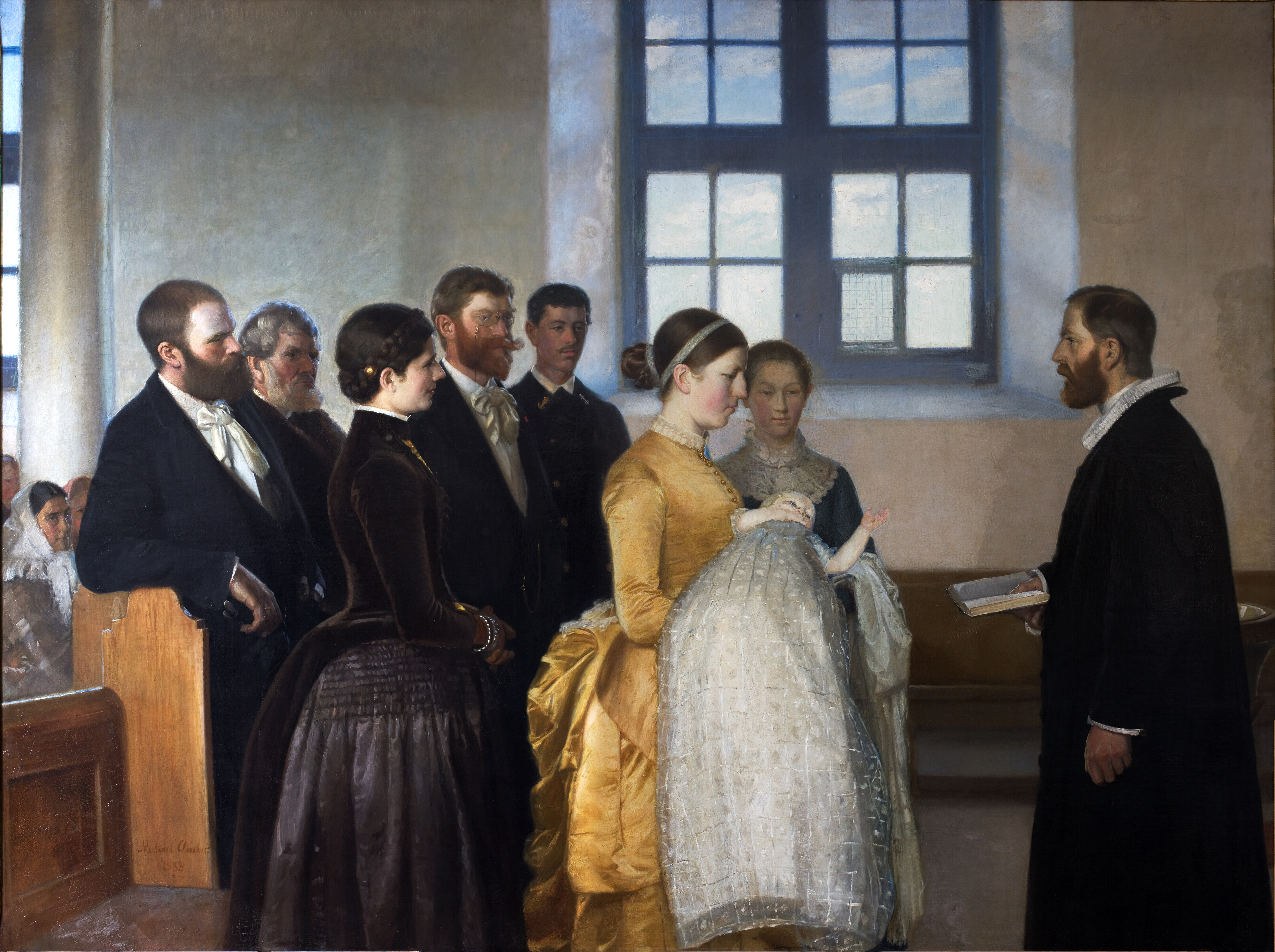
Key works illustrating his artistic vision include:
- Vil han klare pynten (Will he round the point?, 1879), which marked his artistic breakthrough.
- Redningsbåden køres gennem klitterne (The lifeboat is taken through the dunes, 1883), a powerful depiction of community effort and courage.
- The Crew Are Saved (1894), another testament to the drama of sea rescues.
- The Drowned Man (1896), confronting the harsh realities faced by seafaring communities.
- A Baptism (between 1883 and 1888), which exemplifies his ability to blend classical composition with naturalism in a monumental figurative style.
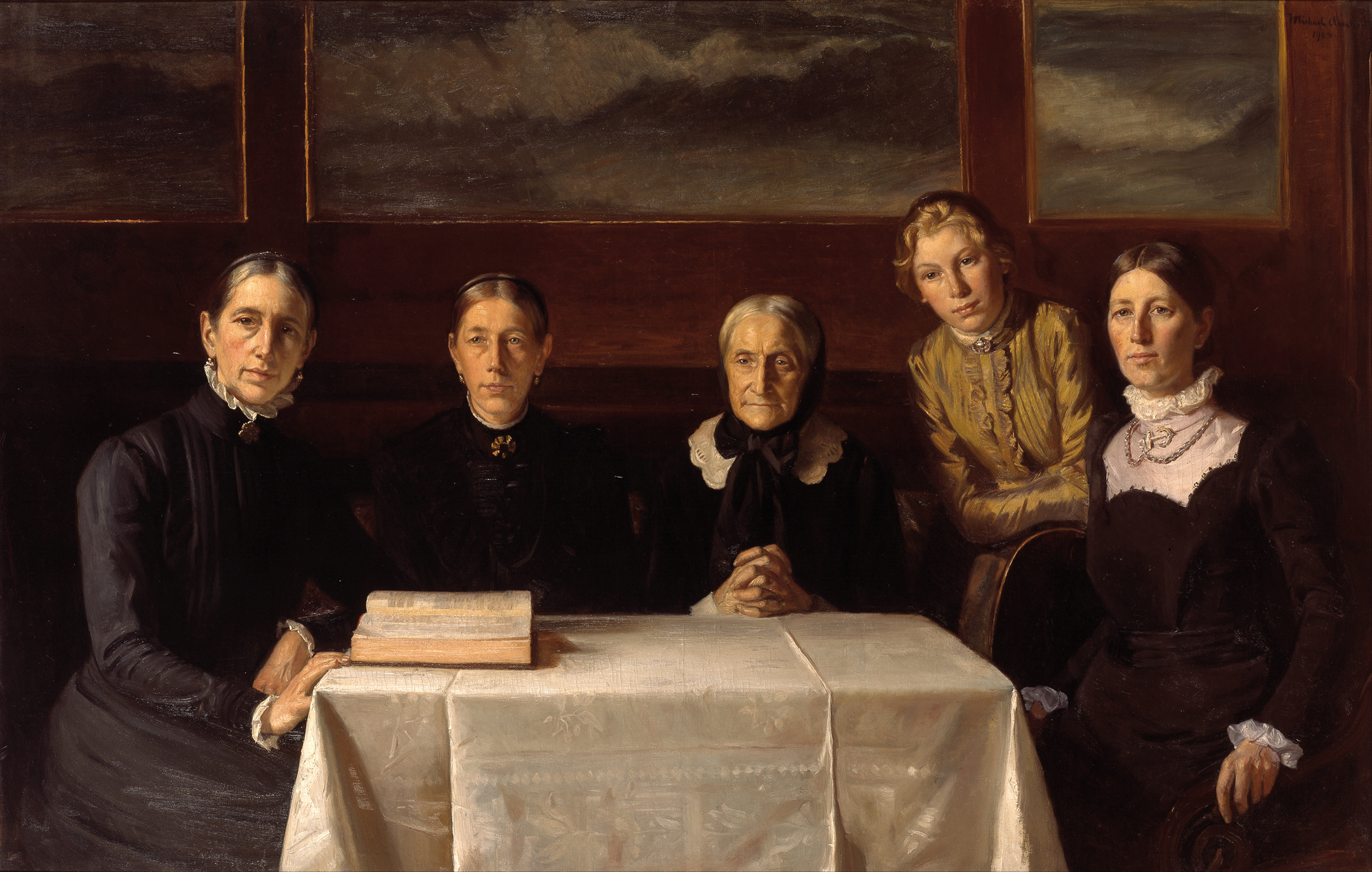
He also captured quieter moments of daily life and tender portraits:
- A stroll on the beach (1896), capturing a quieter moment of daily life.
- Christmas Day 1900, offering a glimpse into the festive traditions of the community.
- Skagen girl, Maren Sofie, knitting, a tender portrayal of local life.
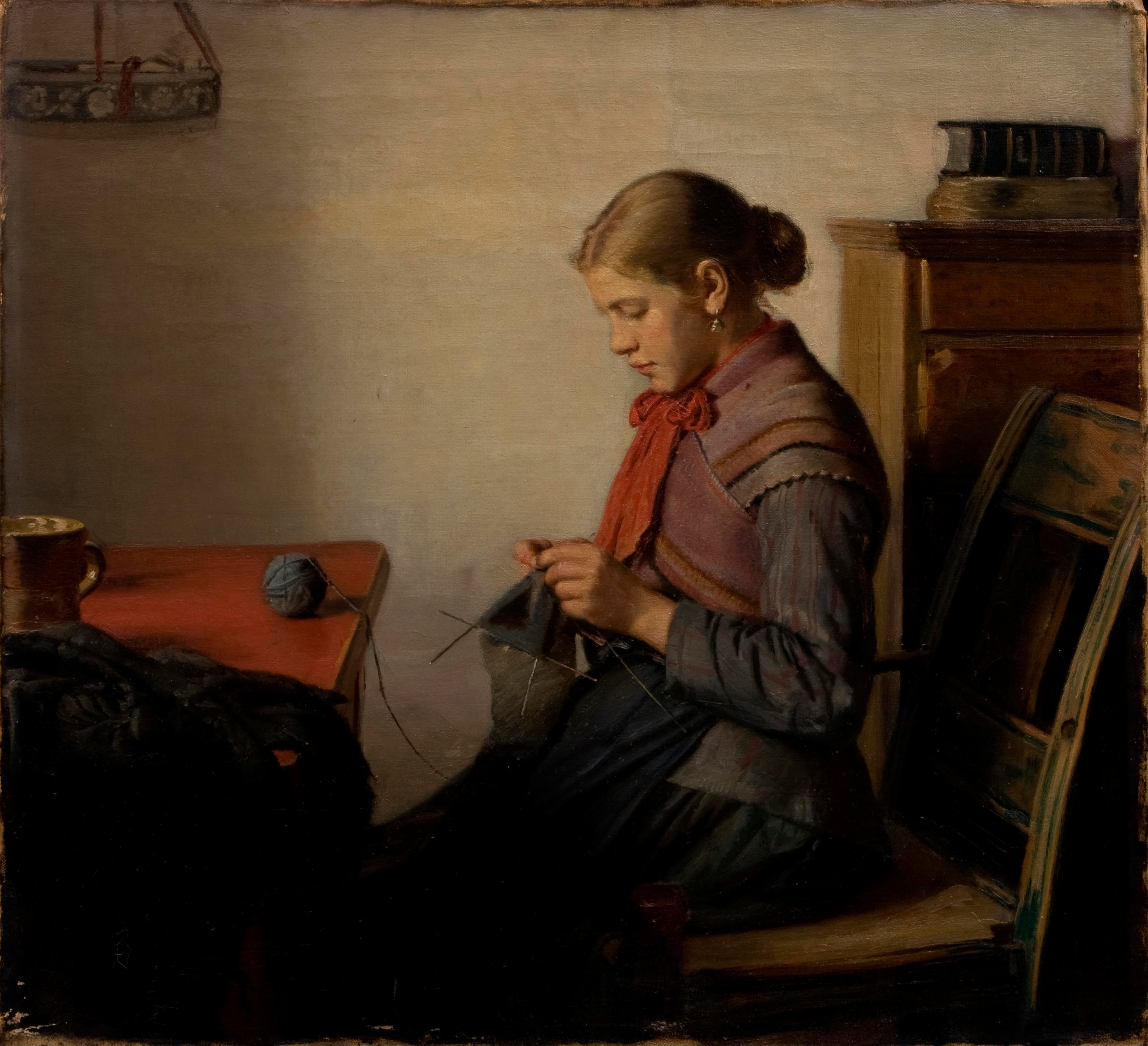
Other significant works include:
- Two Fishermen by a boat, depicting the essence of their profession.
- The red lifeboat on its way out to the sea, another dynamic scene of rescue.
- Breakers on the coast (1884-1885), showcasing his mastery of seascapes.
- Portrait of My Wife, the Painter Anna Ancher, a personal and intimate work.
- Anna Ancher returning from the field, another portrayal of his wife within their natural surroundings.
- Art critics. Study (circa 1906), a more reflective piece.
- Unfinished portrait of Adrian Stokes, providing insight into his working process.

3.3. Awards and Recognition
Michael Ancher received significant accolades during his career. In 1889, he was awarded the prestigious Eckersberg Medal, and in 1894, he was recognized with the Order of the Dannebrog. The works of both Michael and Anna Ancher are prominently displayed in major art institutions, including the Skagens Museum, the Statens Museum for Kunst, the Frederiksborg Museum, The Hirschsprung Collection, and the Ribe Art Museum. Many of Ancher's early paintings were initially exhibited in the dining room of the Brøndums Hotel, a tradition inspired by the painter P.S. Krøyer, who envisioned placing works by various artists on the wall panels. In 1946, this historic dining hall was relocated and became a part of the Skagens Museum, preserving this unique aspect of the Skagen Painters' legacy.
4. Role in the Skagen Painters
Michael Ancher played a pivotal role within the Skagen Painters, the influential group of artists who converged in the village of Skagen. From the mid-1870s, he, along with his student companion Karl Madsen, became a key member of this artistic colony. Each summer, these artists gathered in Skagen, often meeting at the Brøndums Hotel to share ideas, discuss their art, and draw inspiration from the unique light and life of the fishing village. While the 1880s saw the influence of Impressionism inspiring outdoor painting among many Danish and Nordic artists who flocked to Skagen, Ancher's own style maintained a more classical approach, distinguishing him within the group while still contributing to their collective movement.
5. Personal Residence and Legacy
The personal residence of Michael and Anna Ancher has been preserved as a significant cultural heritage site, reflecting their enduring public recognition and artistic importance.
5.1. Ancher's Hus Museum

The Skagen residence of Anna and Michael Ancher, located on Markvej, was acquired in 1884. In 1913, a substantial studio annex was added to the property, which remains a key part of the museum display today. Following the death of their daughter, Helga Ancher, in 1935, the house and all its contents were bequeathed to the Helga Ancher Foundation. In 1967, the home was transformed into a museum, known as Anchers Hus (Ancher's House).
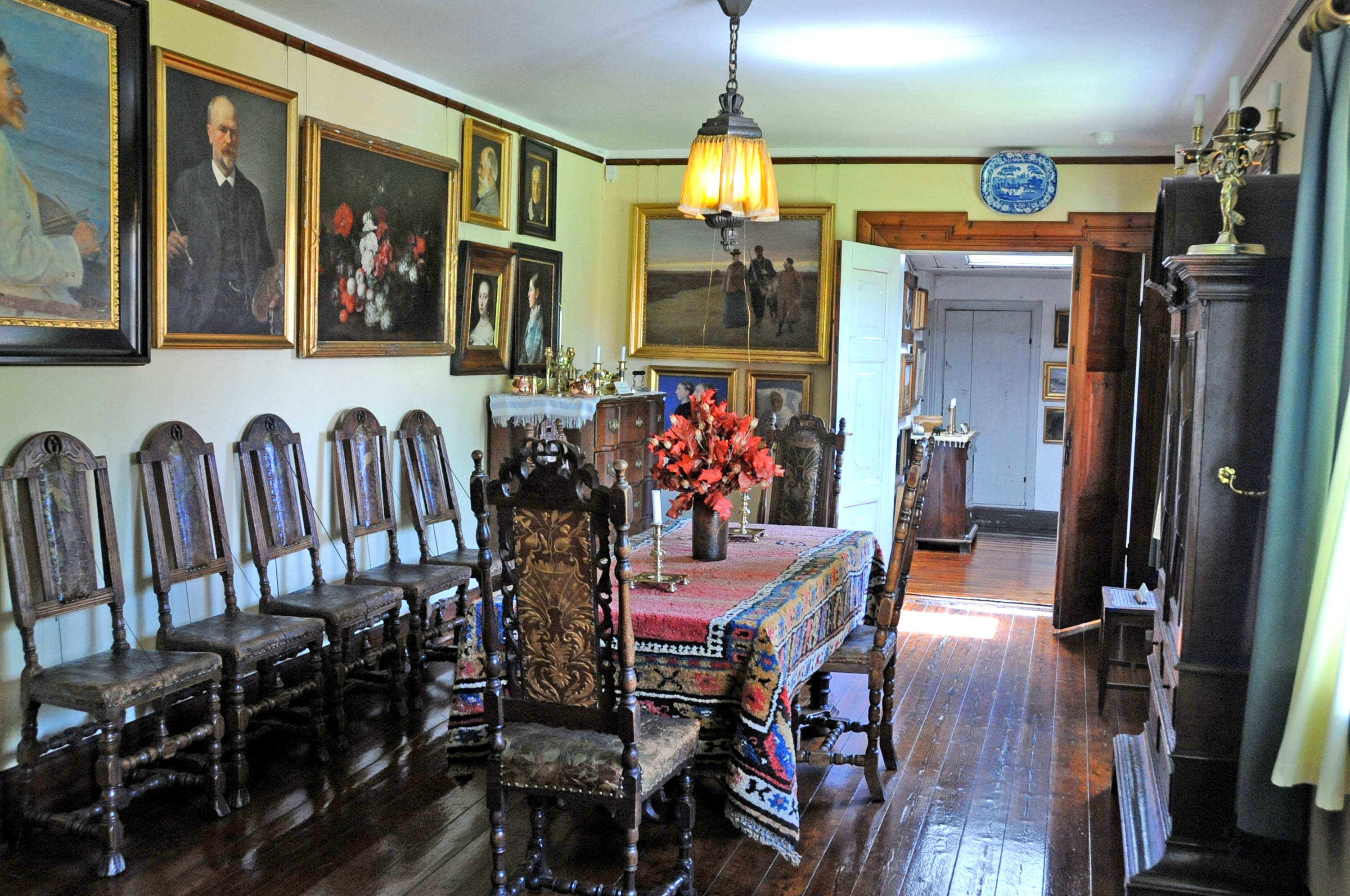
The restored home and studio showcase the original furniture and an extensive collection of paintings created by the Anchers themselves, as well as works by other notable Skagen artists who were part of their close circle of friends. Temporary art exhibitions are also held in Saxilds Gaard, another building located on the property, further enriching the visitor's experience of the Skagen artistic environment. Today, Anchers Hus operates as a vital component of Skagens Kunstmuseer.
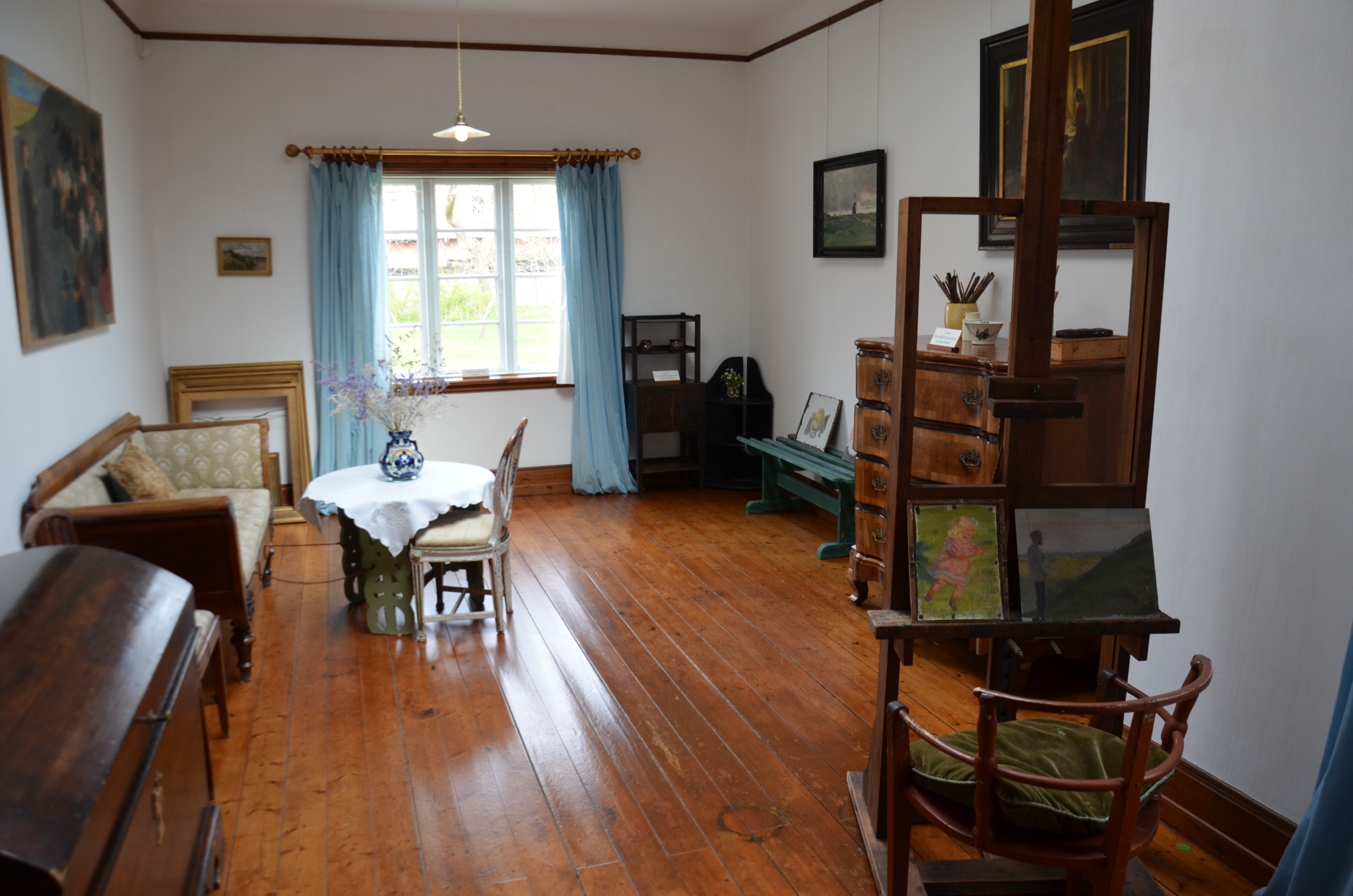
5.2. Depiction on Danish Banknotes
As a testament to their lasting legacy and public recognition, Anna and Michael Ancher were featured prominently on the front of the previous series of the 1.00 K DKK bill. The initial version of this banknote was circulated on September 18, 1998, and subsequently updated on November 25, 2004, to incorporate enhanced security features. The banknote displayed a double portrait of Anna and Michael Ancher. This iconic image was derived from two distinct paintings created in 1884 by Peder Severin Krøyer, which originally adorned the walls of the dining room at Brøndums Hotel, a central hub for the Skagen Painters.
6. Correspondence
A comprehensive collection of nearly 4,000 letters exchanged between Michael and Anna Ancher and their extensive network of friends provides invaluable insight into their lives and artistic world. With detailed comments and scholarly annotations by art historian Elisabeth Fabritius, this significant body of correspondence was published as Anna og Mchael Ancher. Breve og fotografier 1866-1935 (Anna and Michael Ancher. Letters and Photographs 1866-1935) across six volumes by Forlaget Historika in 2020. This publication offers a rare and intimate glimpse into the personal and professional interactions that shaped the lives of the Anchers and the broader Skagen artistic community.
7. Death
Michael Ancher died on September 19, 1927.
8. Assessment and Influence
Michael Ancher's contributions to Danish art history are deeply recognized, and his influence extends beyond his lifetime through his distinct artistic style and the preservation of his legacy.
8.1. Contributions to Art History
Michael Ancher's major achievements and artistic innovations are highly regarded within Danish art history. He is celebrated for his pioneering synthesis of traditional compositional rigor, learned from the Royal Danish Academy, with the naturalistic approach inspired by his wife, Anna Ancher. This fusion enabled him to develop a unique style often termed "modern monumental figurative art." His works are particularly significant for their powerful and empathetic portrayal of the everyday lives, struggles, and heroic resilience of the Skagen fishermen and their community. By combining realism with classical composition, Ancher captured the essence of the working people and the harsh environment they inhabited, providing a valuable artistic record that underscores his commitment to social observation and human dignity.
8.2. Posthumous Influence
Michael Ancher's artistic achievements and ideals have left a lasting impact on subsequent generations of artists and on Danish society as a whole. The preservation of his and Anna Ancher's former home as Anchers Hus (Ancher's House), a museum dedicated to their lives and works, ensures that their artistic legacy and personal environment remain accessible to the public. Furthermore, the decision to feature their portraits on the Danish 1.00 K DKK banknote prominently underscores their enduring national recognition and their status as iconic figures in Denmark's cultural heritage. Their dedication to depicting the local community with depth and empathy continues to inspire artists and resonate with audiences interested in the intersection of art, social realism, and regional identity.